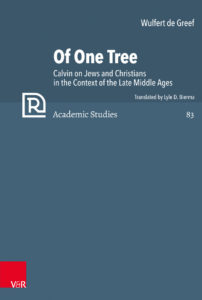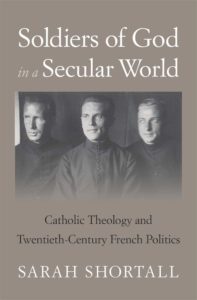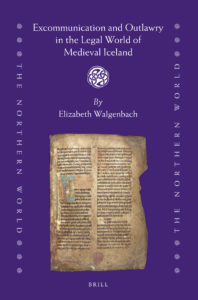Monthly Updates on Recent Books in the History of Christianity
To raise awareness of recent books in the history of Christianity, the editorial staff of Church History: Studies in Christianity and Culture highlights each month a list of 10-15 books in diverse periods and geographical regions that we hope will be of interest to our members. We include here below the nineteenth monthly list, chosen by our staff, with excerpts from the publishers’ blurbs.

Soojin Chung, Adopting for God: The Mission to Change America through Transnational Adoption. 2021
Between 1953 and 2018, approximately 170,000 Korean children were adopted by families in dozens of different countries, with Americans providing homes to more than two-thirds of them. In an iconic photo taken in 1955, Harry and Bertha Holt can be seen descending from a Pan American World Airways airplane with twelve Asian babies—eight for their family and four for other families. As adoptive parents and evangelical Christians who identified themselves as missionaries, the Holts unwittingly became both the metaphorical and literal parental figures in the growing movement to adopt transnationally.
Missionaries pioneered the transnational adoption movement in America. Though their role is known, there has not yet been a full historical look at their theological motivations—which varied depending on whether they were evangelically or ecumenically focused—and what the effects were for American society, relations with Asia, and thinking about race more broadly. Adopting for God shows that, somewhat surprisingly, both evangelical and ecumenical Christians challenged Americans to redefine traditional familial values and rethink race matters. By questioning the perspective that equates missionary humanitarianism with unmitigated cultural imperialism, this book offers a more nuanced picture of the rise of an important twentieth-century movement: the evangelization of adoption and the awakening of a new type of Christian mission.

Ann Marie Borys, American Unitarian Churches: Architecture of a Democratic Religion
University of Massachusetts Press
The Unitarian religious tradition was a product of the same eighteenth-century democratic ideals that fueled the American Revolution and informed the founding of the United States. Its liberal humanistic principles influenced institutions such as Harvard University and philosophical movements like Transcendentalism. Yet, its role in the history of American architecture is little known and studied.
In American Unitarian Churches, Ann Marie Borys argues that the progressive values and identity of the Unitarian religion are intimately intertwined with ideals of American democracy and visibly expressed in the architecture of its churches. Over time, church architecture has continued to evolve in response to developments within the faith, and many contemporary projects are built to serve religious, practical, and civic functions simultaneously. Focusing primarily on churches of the nineteenth and twentieth centuries, including Frank Lloyd Wright's Unity Temple and Louis Kahn's First Unitarian Church, Borys explores building histories, biographies of leaders, and broader sociohistorical contexts. As this essential study makes clear, to examine Unitarianism through its churches is to see American architecture anew, and to find an authentic architectural expression of American democratic identity.

Wulfert de Greef, Of One Tree: Calvin on Jews and Christians in the Context of the Late Middle Ages, translated by Lyle D. Bierma. 2021
This is the first work to examine Calvin's understanding of the relationship between Jews and Christians at such a fundamental level. After an overview of the status of Jews in Europe during the late Middle Ages and the interest at that time in the knowledge of Hebrew and Judaism, the author turns specifically to Calvin and his interpretation of the Bible. Several important questions are addressed: How did Calvin understand the relationship between Jews and Christians? Have Christians taken the place of the Jews, or do they belong to the Jews because they are included in the relationship between God and Israel? What does Calvin have to say about the future of the Jews? The author concludes that Calvin's view of the relationship between Jews and Christians is closely tied to his view of the unity of the Old and New Testaments.

Lisa Agaiby and Tim Vivian, Door of the Wilderness: The Greek, Coptic, and Copto-Arabic Sayings of St. Antony of Egypt. An English Translation, with Introductions and Notes. 2021
Saint Antony of Egypt (c. 251–356), often called “the father of monasticism,” has numerous representations: the Antony of the Life of Antony and the Letters, but also the Antony of around 120 sayings or apophthegmata. This volume presents fresh English translations of the Greek and Coptic sayings, as well as the first English translation of the Copto-Arabic sayings that are based on unpublished manuscripts. The volume thus opens the door to a richer image of Saint Antony’s many identities across various languages and traditions.

Antonio E. Felle and Bryan Ward-Perkins, eds. Cultic Graffiti in the Late Antique Mediterranean and Beyond. 2021
Graffiti, scratched or drawn on the walls of religious shrines, provide unique unmediated evidence of how ordinary men and women, many of them pilgrims, invoked and sought the help of God and the saints in Late Antiquity. The papers in this volume document and discuss cultic graffiti across the entire late antique Mediterranean, and into Nubia and Arabia. The principal focus is the Christian world, but there are also papers that look back to pre-Christian practice, and into the world of early Islam. Presenting evidence that is often unfamiliar, this is an important volume for anyone interested in the History and Archaeology of Late Antiquity. In examining cultic practice, we are almost always compelled to view the actions of devotees through texts written by the ecclesiastical elite, often with a clear hagiographical agenda in mind - cultic graffiti are evidence produced by the protagonists themselves.

Jeanette L. Patterson, Making the Bible French: The Bible historiale and the Medieval Lay Reader. 2022
From the end of the thirteenth century to the first decades of the sixteenth century, Guyart des Moulins’s Bible historiale was the predominant French translation of the Bible. Enhancing his translation with techniques borrowed from scholastic study, vernacular preaching, and secular fiction, Guyart produced one of the most popular, most widely copied French-language texts of the later Middle Ages.
Making the Bible French investigates how Guyart’s first-person authorial voice narrates translation choices in terms of anticipated reader reactions and frames the biblical text as an object of dialogue with his readers. It examines the translator’s narrative strategies to aid readers’ visualization of biblical stories, to encourage their identification with its characters, and to practice patient, self-reflexive reading. Finally, it traces how the Bible historiale manuscript tradition adapts and individualizes the Bible for each new intended reader, defying modern print-based and text-centred ideas about the Bible, canonicity, and translation.

Peter W.M. Blayney, The Printing and the Printers of The Book of Common Prayer, 1549–1561. 2022
Bibliographers have been notoriously 'hesitant to deal with liturgies', and this volume bridges an important gap with its authoritative examination of how the Book of Common Prayer came into being. The first edition of 1549, the first Grafton edition of 1552 and the first quarto edition of 1559 are now correctly identified, while Peter W. M. Blayney shows that the first two editions of 1559 were probably finished on the same day. Through relentless scrutiny of the evidence, he reveals that the contents of the 1549 version continued to evolve both during and after the printing of the first edition, and that changes were still being made to the Elizabethan revision weeks after the Act of Uniformity was passed. His bold reconstruction is transformative for the early Anglican liturgy, and thus for the wider history of the Church of England. This major, revisionist work is a remarkable book about a remarkable book.

David M. Gustafson, Gospel Witness through the Ages: A History of Evangelism. 2022
Christians have been sharing the good news of Jesus Christ with nonbelievers for two thousand years. Within this deep history is wisdom for today—including numerous models for understanding what evangelism is and how it should be done.
In Gospel Witness through the Ages, David Gustafson introduces readers to evangelism’s noteworthy persons, movements, and methods from the entire scope of church history—including both examples to emulate and examples to avoid. With this thorough historical approach, Gustafson expands the reader’s conception of the evangelistic task and suggests new ways to shape our identity as gospel witnesses today through the influence of these earlier generations of Christians.
With discussion questions for further reflection and primary sources from major evangelistic figures of the past, Gospel Witness through the Ages is the most definitive history of evangelism available—essential for understanding how Christians today can continue proclaiming the gospel to the whole world, as Christians have in every century past.

Do Hoon Kim, John Eliot’s Puritan Ministry to New England “Indians.” 2021
John Eliot (1604–90) has been called “the apostle to the Indians.” This book looks at Eliot not from the perspective of modern Protestant “mission” studies (the approach mainly adopted by previous research) but in the historical and theological context of seventeenth-century puritanism. Drawing on recent research on migration to New England, the book argues that Eliot, like many other migrants, went to New England primarily in search of a safe haven to practice pure reformed Christianity, not to convert Indians. Eliot’s Indian ministry started from a fundamental concern for the conversion of the unconverted, which he derived from his experience of the puritan movement in England. Consequently, for Eliot, the notion of New England Indian “mission” was essentially conversion-oriented, Word-centered, and pastorally focused, and (in common with the broader aims of New England churches) pursued a pure reformed Christianity. Eliot hoped to achieve this through the establishment of Praying Towns organized on a biblical model—where preaching, pastoral care, and the practice of piety could lead to conversion—leading to the formation of Indian churches composed of “sincere converts.”

Michael Motia, Imitations of Infinity: Gregory of Nyssa and the Transformation of Mimesis. 2021
University of Pennsylvania Press
We do not have many definitions of Christianity from late antiquity, but among the few extant is the brief statement of Gregory of Nyssa (335-395 CE) that it is "mimesis of the divine nature." The sentence is both a historical gem and theologically puzzling. Gregory was the first Christian to make the infinity of God central to his theological program, but how could he intend for humans to imitate the infinite? If the aim of the Christian life is "never to stop growing towards what is better and never to place any limit on perfection," how could mimesis function within this endless pursuit?
In Imitations of Infinity, Michael Motia situates Gregory among Platonist philosophers, rhetorical teachers, and early Christian leaders to demonstrate how much of late ancient life was governed by notions of imitation. Questions both intimate and immense, of education, childcare, or cosmology, all found form in a relationship of archetype and image. It is no wonder that these debates demanded the attention of people at every level of the Roman Empire, including the Christians looking to form new social habits and norms. Whatever else the late ancient transformation of the empire affected, it changed the names, spaces, and characters that filled the imagination and common sense of its citizens, and it changed how they thought of their imitations.
Like religion, imitation was a way to organize the world and a way to reach toward new possibilities, Motia argues, and two earlier conceptions of mimesis—one centering on ontological participation, the other on aesthetic representation—merged in late antiquity. As philosophers and religious leaders pondered how linking oneself to reality depended on practices of representation, their theoretical debates accompanied practical concerns about what kinds of objects would best guide practitioners toward the divine. Motia places Gregory within a broader landscape of figures who retheorized the role of mimesis in search of perfection. No longer was imitation a marker of inauthenticity or immaturity. Mimesis became a way of life.

Sarah Shortall, Soldiers of God in a Secular World: Catholic Theology and Twentieth-Century French Politics. 2021
Secularism has been a cornerstone of French political culture since 1905, when the republic formalized the separation of church and state. At times the barrier of secularism has seemed impenetrable, stifling religious actors wishing to take part in political life. Yet in other instances, secularism has actually nurtured movements of the faithful. Soldiers of God in a Secular World explores one such case, that of the nouvelle théologie, or new theology. Developed in the interwar years by Jesuits and Dominicans, the nouvelle théologie reimagined the Church’s relationship to public life, encouraging political activism, engaging with secular philosophy, and inspiring doctrinal changes adopted by the Second Vatican Council in the 1960s.
Nouveaux théologiens charted a path between the old alliance of throne and altar and secularism’s demand for the privatization of religion. Envisioning a Church in but not of the public sphere, Catholic thinkers drew on theological principles to intervene in political questions while claiming to remain at arm’s length from politics proper. Sarah Shortall argues that this “counter-politics” was central to the mission of the nouveaux théologiens: by recoding political statements in the ostensibly apolitical language of doctrine, priests were able to enter into debates over fascism and communism, democracy and human rights, colonialism and nuclear war. This approach found its highest expression during the Second World War, when the nouveaux théologiens led the spiritual resistance against Nazism. Claiming a powerful public voice, they collectively forged a new role for the Church amid the momentous political shifts of the twentieth century.

Elizabeth Walgenbach, Excommunication and Outlawry in the Legal World of Medieval Iceland. 2021
In this book Elizabeth Walgenbach argues that outlawry in medieval Iceland was a punishment shaped by the conventions of excommunication as it developed in the medieval Church. Excommunication and outlawry resemble one another, often closely, in a range of Icelandic texts, including lawcodes and narrative sources such as the contemporary sagas. This is not a chance resemblance but a by-product of the way the law was formed and written. Canon law helped to shape the outlines of secular justice.
The book is organized into chapters on excommunication, outlawry, outlawry as secular excommunication, and two case studies—one focused on the conflicts surrounding Bishop Guðmundr Arason and another focused on the outlaw Aron Hjǫrleifsson.
Finally, for staying up-to-date on the latest titles in all fields, we recommend regularly perusing New Books Network and its "New Books in Christian Studies” page. These pages are updated regularly.
